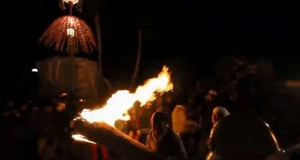 Nozawaonsen is a village of about five thousand people about an hours drive from Nagano City. It is famed for its hot springs, which according to legend were discovered when an injured bear led a hunter to them, its skiing, and for hosting part of the Nagano Winter Olympics in 1998.
Nozawaonsen is a village of about five thousand people about an hours drive from Nagano City. It is famed for its hot springs, which according to legend were discovered when an injured bear led a hunter to them, its skiing, and for hosting part of the Nagano Winter Olympics in 1998.
It is also famous for being the site of one of the greatest fire festivals in Japan, a frenetic, sake-fueled New Years celebration known as the Nozawa Onsen Fire Festival, Nozawa Onsen Dosojin Matsuri.
The festival is meant to honor the dosojin, protective kami said to watch over roads and travelers. A specific dosojin is believed to protect Nozawa Onsen. It is a duel male-female being that promotes good harvests, fertility, and in recent years, a good ski season.
Preparation for the festival begins in October, when trees later used to construct a shrine in the center of town are felled. The shrine is built on January 13th. On the 15th, the most famous (and insane) part of the festival begins:the “fire-setting battle.”
Prior to the battle, participants get loaded up on sake. This process is helped along by men wandering among the crowd, pouring the potent rice wine from 1.8 liter bottles. As night falls and the crowd gets drunker, huge bonfires are lit not far from the shrine, which will be used in the battle to come.
Two sets of men take up their positions at the shrine. Twenty-five year old men line up at the bottom, holding onto ropes tied to the shrine in one hand and pine branches in the other. Forty-two year old men take up position on the nest like structure on the top of the shrine, armed with pine boughs and kindling. These are considered unlucky ages, and their participation in the ceremony is seen as a way to help dispel the bad luck and bring about good fortune.
These are opposed by other men in the village, who dip bundles of reeds in the bonfire to make torches. The torch-bearers full on charge the twenty-five year olds, whooping and swinging their torches, attempting to set the shrine on fire. The young men try to force back the horde, by pushing, shoving, and swatting out fires with pine boughs. Meanwhile, the older men on top the shrine hurl kindling and insults at the attackers.
This goes on for hours, with the attackers inching their bonfire ever closer. After about four hours or so, the older men declare victory and clamber down from the shrine. A flaming log is levered into the base, and everyone drinks sake while they watch the shrine go up in flames. Thus ends one of three great fire festivals of Japan, Dosojin Matsuri.
Sources:
http://apdl.kcc.hawaii.edu/roads/2008_winter/_snow_country.html
http://www.theguardian.com/travel/2012/dec/28/charlie-brooker-japan-fire-festival
http://en.wikipedia.org/wiki/Nozawaonsen,_Nagano
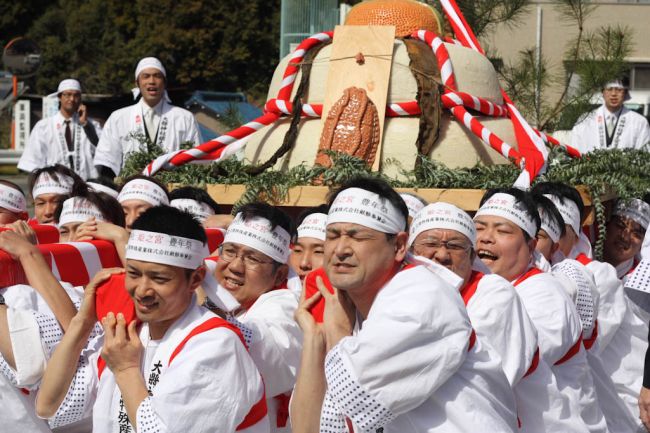
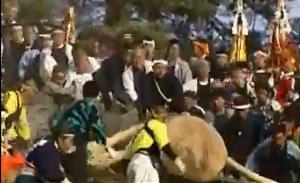
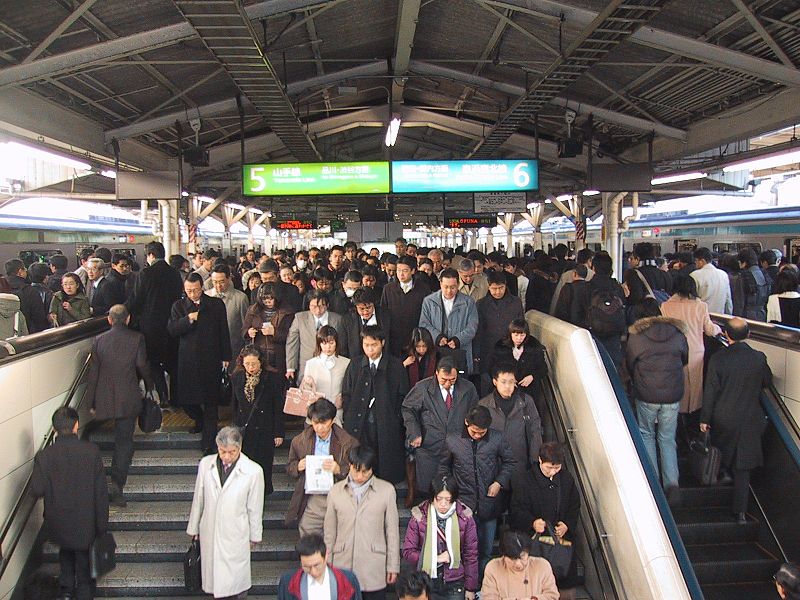
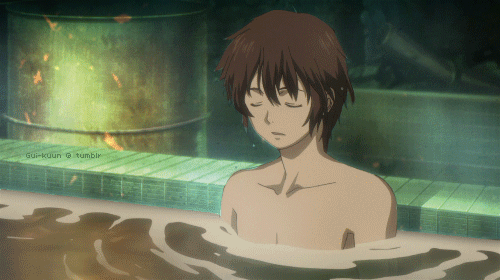
Just found this. I wrote “Fire, Fear and Trembling” after attending in January of ’15. I’d traveled to Nozawa with an old friend during a ski/onsen trip. Absolutely wild, and we were at the back of the mob. I suspect that they’ve had to tone this down some since then, as it’s started attracting crowds of foreign tourists who don’t understand the Japanese social/cultural relationship with public drunkenness and alcohol.
“Yakudoshi” refers to unlucky ages. “42”, spoken as digits in Japanese, sounds like the expression, “to die”. So the town’s 42-year old men climb to the top of the fire shrine and dare the villagers to burn it down while they’re on it. The town’s 25-years old men (for reasons unknown to me) are tasked the job of protecting the shrine from the rest of the village men. They’re given long sticks that they’re supposed to hold up to block torches from reaching the base of the shrine. They end up thoroughly beat up, bloodied and scorched, and covered in soot. Sort of a right-of-passage. Extremely visceral event, even for the crowd.
Do you think tourism is helping or hurting old practices like Dosojin Matsuri?
There’s certainly a tourist performance aspect. But for people with insight into the culture, events such as Dosojin Matsuri can be affectively participatory. So I don’t think some degree of Japanese tourism is necessarily a negative. I would even argue that the crowds at temples during Oshōgatsu (New Year) are the whole point. The problem is, as intolerant as this may sound, attendance by those who don’t understand the culture or traditions, and for whom it’s strictly entertainment.
I’ve long been struck by how voyeuristic some aspects of West to East (or West to Africa for that matter) tourism can be. It depends on the tourist, of course. But culture can easily be reduced to a show. Native American culture, for instance, has this problem. While the show-aspect helps the culture survive, it becomes a shadow of its former self. Do you see this problem too?
We’re only aware of either that which is public, or that to which we ascribe some authority within our own cultures. I’ve toured a new Mormon temple. But I’ve never been privy to the ceremonies conducted within after it was consecrated. Likewise, Native American culture. I was deeply honored to have once been invited to attend a very private and traditional house-blessing ceremony on the Zuni Pueblo. Certainly, I was curious. But it also commanded a deep respect, and a sincere desire to understand what I was witnessing. Somewhere between that and a later “gathering-of-nations” in the Gallup WalMart parking lot are the pop-cultural iconographies of actual traditions… Zuni fetishes, for example. Voyeurism doesn’t have to diminish a culture any more than an outsider’s ignorance. What’s important is that people with a common cultural understanding can still gather with meaning.
Thank you for sharing your experiences! I worry about the dilution and loss of cultures and their stories. The number of cultures that have already gone extinct can be discouraging.